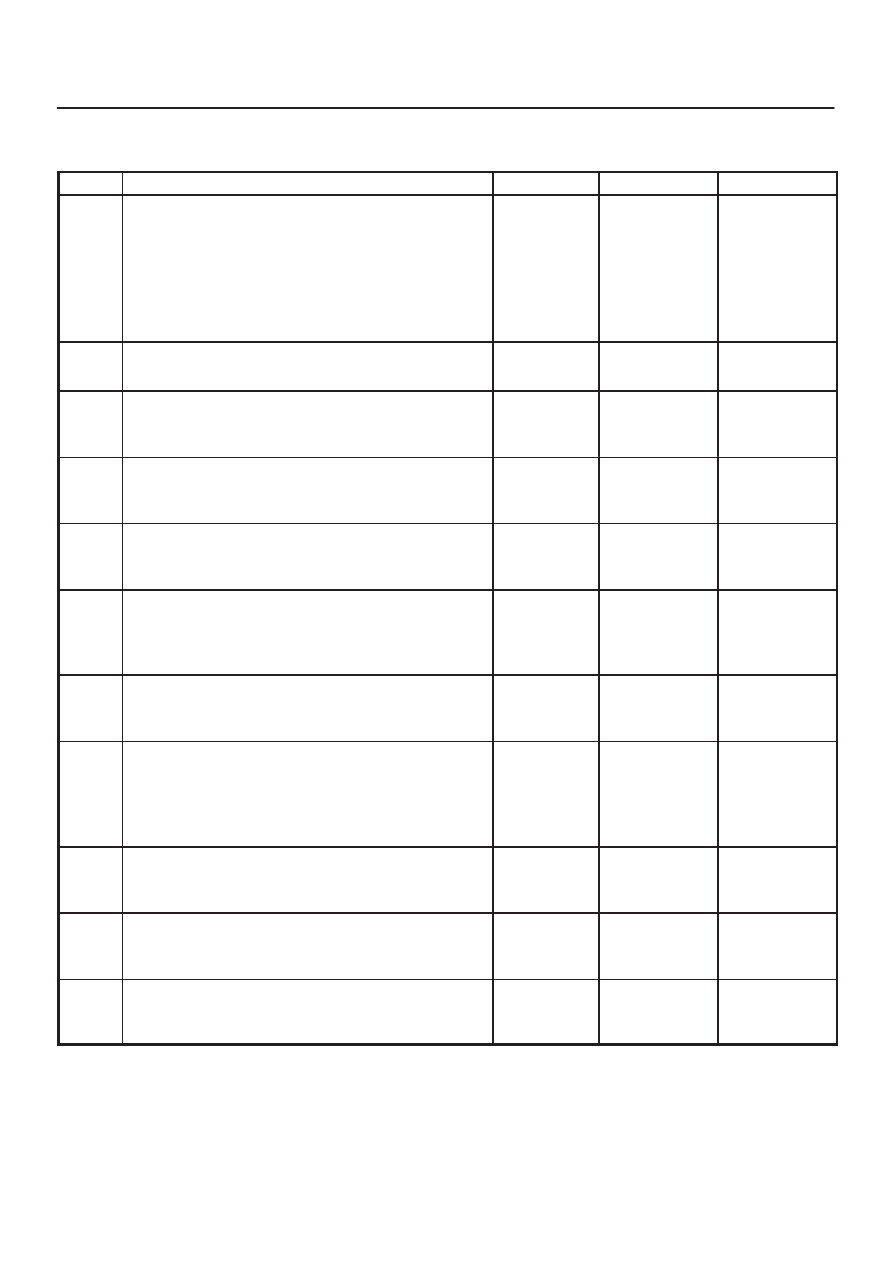Content .. 1402 1403 1404 1405 ..
Isuzu Amigo / Axiom / Trooper / Rodeo / VehiCross. Manual - part 1404

6E2–67
RODEO 6VD1 3.2L ENGINE DRIVEABILITY AND EMISSIONS
A/C Clutch Control Circuit Diagnosis
(Cont'd)
Step
No
Yes
Value(s)
Action
32
1. A/C compressor relay removed.
2. Connect a fused jumper at the A/C compressor
relay socket with either wire.
3. Engine idling.
4. A/C “ON”.
5. Blower “ON”.
Did the compressor magnetic clutch engage?
—
Go to
Step 33
Go to
Step 34
33
Repair the A/C compressor relay.
Is the action complete?
—
Verify repair
—
34
Check for an open circuit between the A/C compressor
relay and the A/C clutch.
Was an open circuit found?
—
Go to
Step 35
Go to
Step 36
35
Repair the open circuit between the compressor Clutch
and the A/C compressor relay.
Is the action complete?
—
Verify repair
—
36
Service the compressor clutch or replace the
compressor due to a faulty internal overheat switch.
Is the action complete?
—
Verify repair
—
37
1. Remove the A/C compressor relay.
2. Idle the engine.
Is the compressor clutch still engaged when A/C is not
selected?
—
Go to
Step 38
Go to
Step 39
38
Repair the short to voltage between the A/C clutch and
A/C compressor relay.
Is the action complete?
—
Verify repair
—
39
1. Reinstall the A/C compressor relay.
2. Remove the A/C thermostat relay.
3. Engine idling.
Is the compressor clutch still engaged when A/C is not
selected?
—
Go to
Step 40
Go to
Step 42
40
Use a DVM to check for a short to ground between the
A/C compressor relay and F4 of the PCM.
Was a short detected?
—
Go to
Step 41
Go to
Step 25
41
Repair the short to ground between the PCM and A/C
compressor relay.
Is the action complete?
—
Verify repair
—
42
Repair the short to ground between the A/C thermostat
relay and the electronic thermostat.
Is the action complete?
—
Verify repair
—